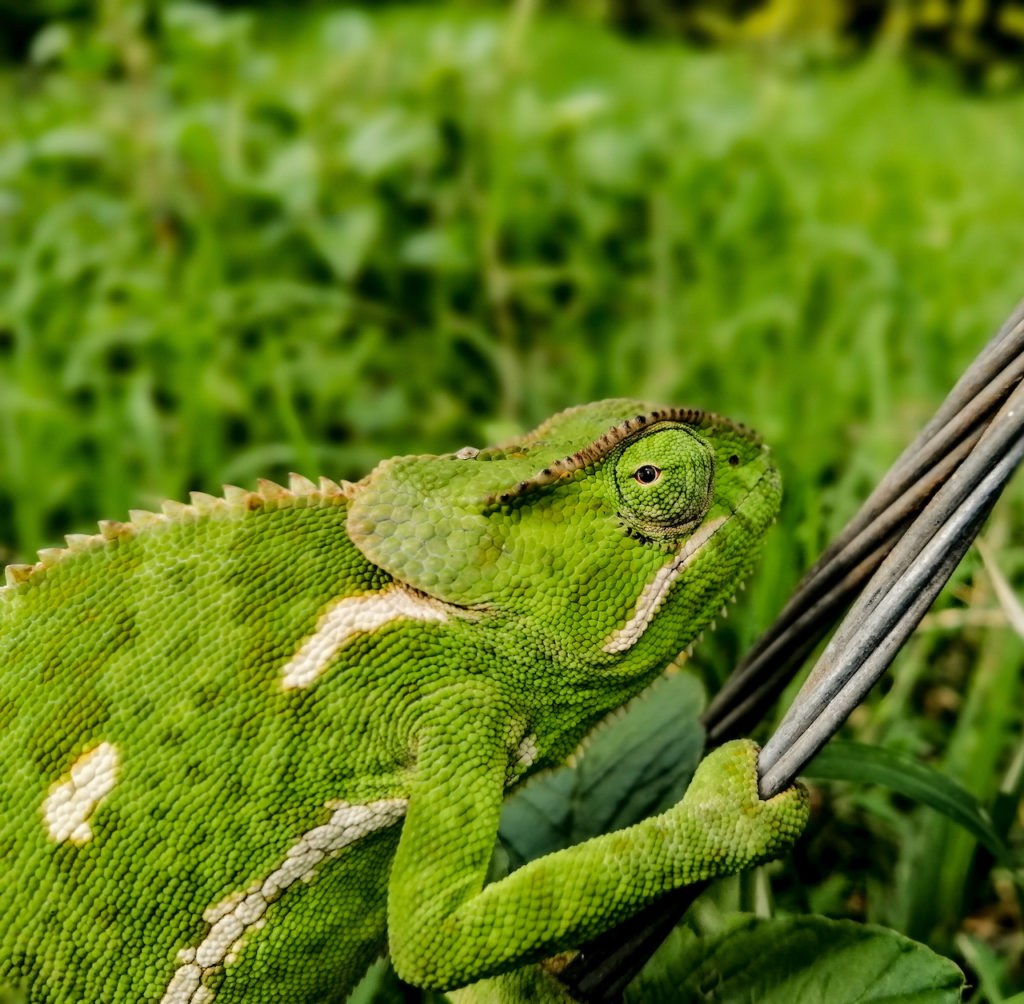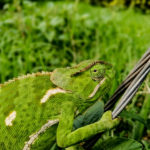I captured this image on my phone a few years back at work while I was out on my lunch break. Seated by the grassy field right behind our office this little guy was making his way oblivious to my existence. With no intentions of spooking the little guy off, I quietly crawled up to him and took the shot as he was climbing up a twisted wire band on his way to some bushes. As the noon sun was very bright, the vibrant colors of the chameleon’s skin were highly conspicuous with a bright green shade to it.
Chameleons have always fascinated me ever since I was a toddler. I remember my nanny always telling me stories of how I would be spending my younger days out in the fields looking out for chameleons with my Dad. I would then get very excited when I spotted one and end up grabbing them with no fear of any harm to myself at that tender age.
I remember how easy it was for us to spot chameleons in the bushes near where we lived when I was younger. But with the climatic and demographic changes that have seen more of the natural land degraded and reclaimed for human activities, it would take me about 6 months now to spot a single chameleon in our current neighborhoods as so much of the natural habitat has been highly depleted.
Here are some Interesting facts about Chameleons :-
- It is a general misconception that chameleons change colors to match their surroundings. A chameleon’s skin changes colors in response to its emotions, such as anger or fear, changes in light, temperature or humidity.
- An adult leaf chameleon grows to just 0.5 inches (16 millimeters) and can sit comfortably on the head of a match
- The Madagascan chameleon has been labeled as the vertebrate with the world’s shortest life span, according to Encyclopedia Britannica. Their eggs hatch in November, the young become adults in January, they lay eggs in February, and then the entire adult population perishes after a lifespan of just three months.



